We are up to holiday appetizers and Part 3 of my story, Beautiful People (click for Part 1, Part 2, Part 4, Part 5, Part 6, Part 7).



3. Hassidic Jews – from Hassidism, a religious movement originated in Southern Poland in 18th century
4. Reds – supporters of the Red (Bolshevik, later Communist) Army
5. Whites – supporters of the old regime, or Czarist Army
6. Greens – supporters of the Ukrainian Nationalist Army, as well as random gangs or unaffiliated marauders. All of these were warring factions during the Civil War of 1918 – 1920.
7. Vera Kholodnaya – one of the most famous Russian silent movie actresses, analogous to Bette Davis or Marlene Dietrich.
8. Shivah – seven days of mourning following the death of a relative.
9. Birobidjan – an autonomous republic established for Jews by Stalin’s order in 1934, located in the far northeast of the Soviet Union, close to the Chinese border.
10. Shikseh – a woman or girl of non-Jewish birth.
s you will find out when you getto the actual appetizer recipes, they are loaded with symbolism meant to bring good luck in the New Year – “a bissele Mazel“!
The word Tzimmes insinuated itself into languages of all countries where Jews have lived during the two thousand years of exile. Its meaning evolved from something sweet eaten on Rosh Hashana with a hope for a sweet year to anything sweet, delicious, beautiful, a bargain, an advantageous deal, etc. “Have I got a girl for your son, – a matchmaker would announce, – the very tzimmes of a girl!”
In this beautiful scene from Fiddler on the Roof, the three sisters dream about a tzimmes of a match. Unfortunately, as we all know, it doesn’t happen for them. In America, this word somehow acquired yet another meaning: a fuss or an uproar. I can’t imagine the reason for it as this is a dish that requires the least amount of fuss.
The most popular tzimmes in the US is carrot, or mehren tzimmes. Carrots belong to the list of symbolic foods served on Rosh Hashana, with a special blessing said over each one of them. Some of them are mentioned in the Gemorrah, but Magen Avraham says that any food whose name implies increase or abundance will do, and the names don’t even have to be in Hebrew, but could be in any local language. In Yiddish, mehr means more, and thus carrots have gained their significance. I will certainly make a traditional mehren tzimmes, which is also no big fuss, but for now, we are looking at a very unusual one, made with fasoles – red kidney beans. How did they get into this prestigious line up?
There is a traditional blessing on fenugreek, “that our merits should increase.” Rashi believed that fenugreek was the plant that the Gemorrah called rubia, and the word rubia has the same root as yirbu – to increase. Based on this interpretation, Yemenite Jews make a paste similar to curry served on Rosh Hashana with the appropriate blessing. However, since fenugreek was unknown to Eastern Europe, the substitution was initiated in Bagdad, using a red been stew called loobia, or lubia (I have mentioned it in my previous posts Almost Moroccan Salad and Lobio) which was how they pronounced rubia.
Contrary to the original recipe which is basically a spicy vegetable stew, sometimes with meat, our Tzimmes mit Fasoles is sweet, rather than spicy. Following the Ashkenazi (Eastern European) tradition, we smother everything in honey. This is a real no fuss recipe. It cooks for a long time, but I shorten it by precooking beans in a crock pot. First, of course, you have to soak them for at least a couple of hours. I soak all beans overnight.
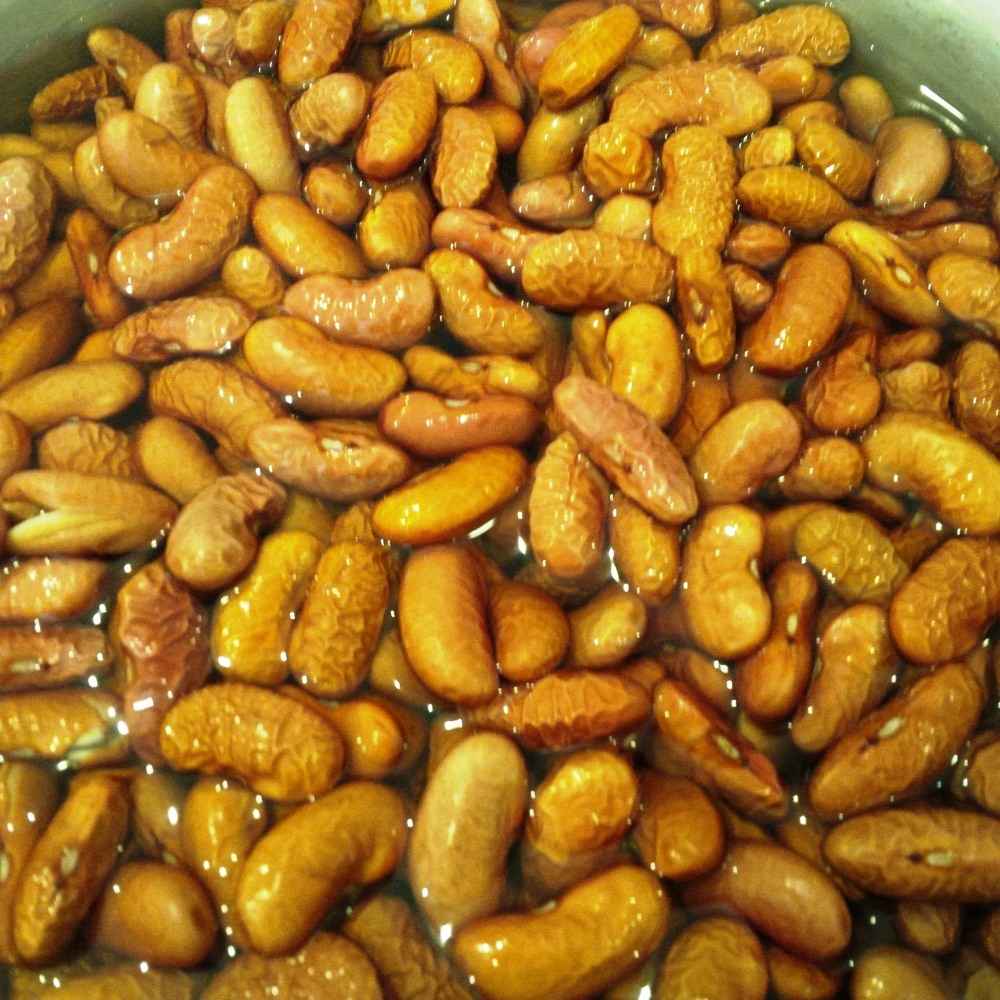
Discard the water they were soaking in, cover with fresh water, turn your crock pot on high and go do something else.
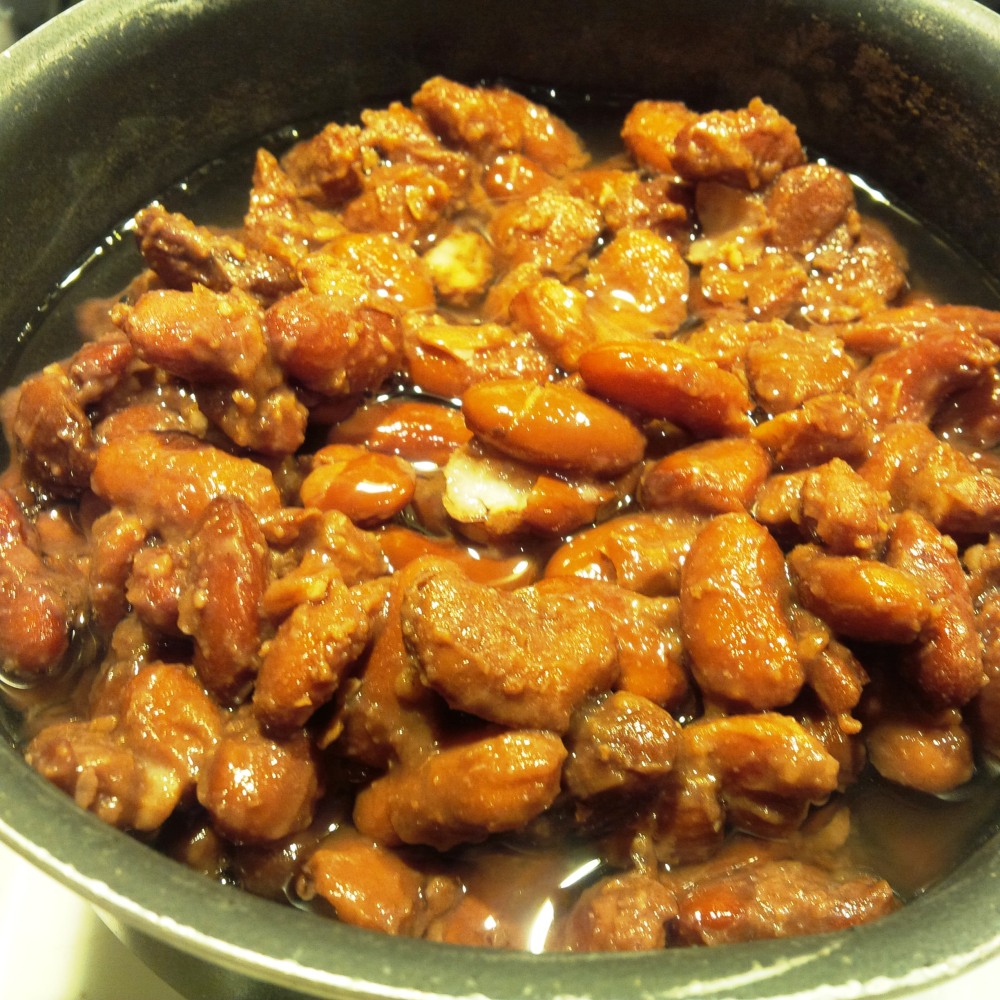
When the beans are ready to the point of falling apart, transfer them to a stove top pot and cover with water. Give them a stir, to prevent from sticking to the pot.
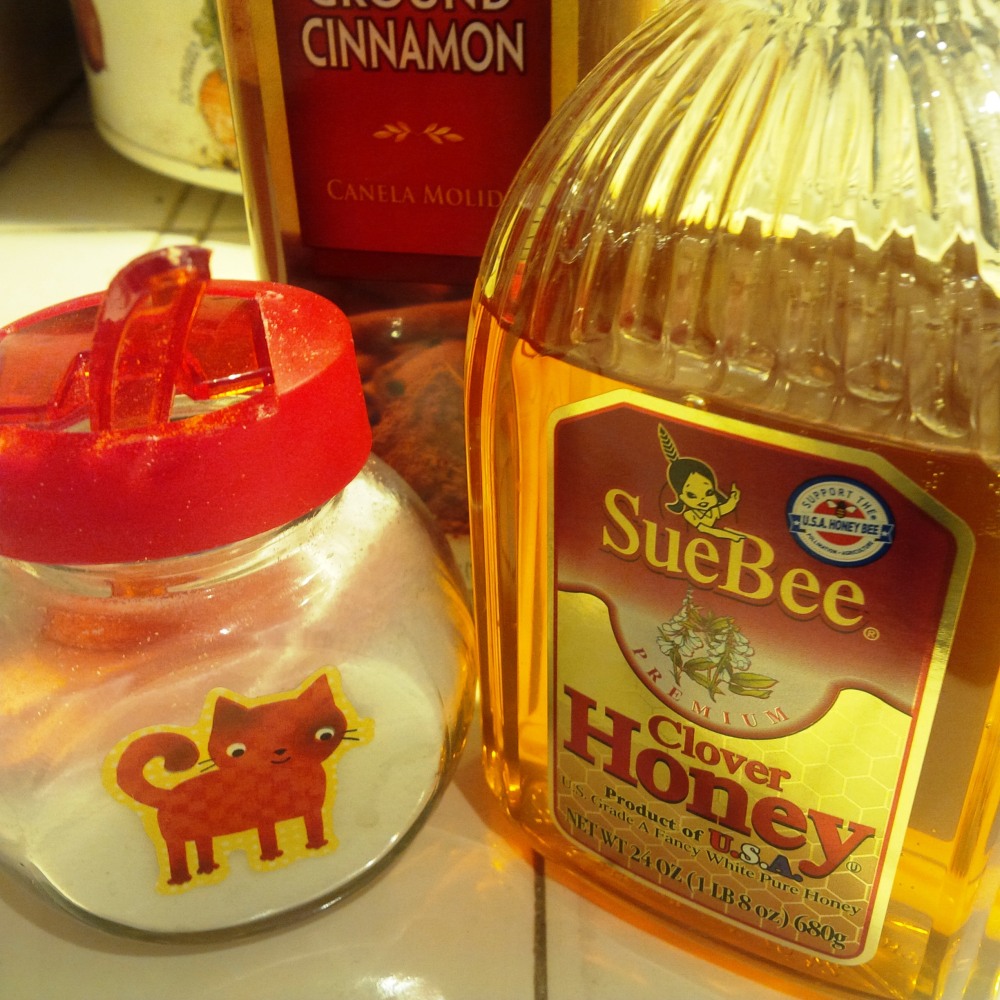
Bring them to boil and add honey and cinnamon (you can also add nutmeg, but my husband doesn’t like it, so I don’t do it). You’ll have to adjust the sweetness to taste, but I cheat. If I think it’s not sweet enough, I add xylitol instead of honey. I think the level of sugar on Rosh Hashana is beyond tolerance as it is.
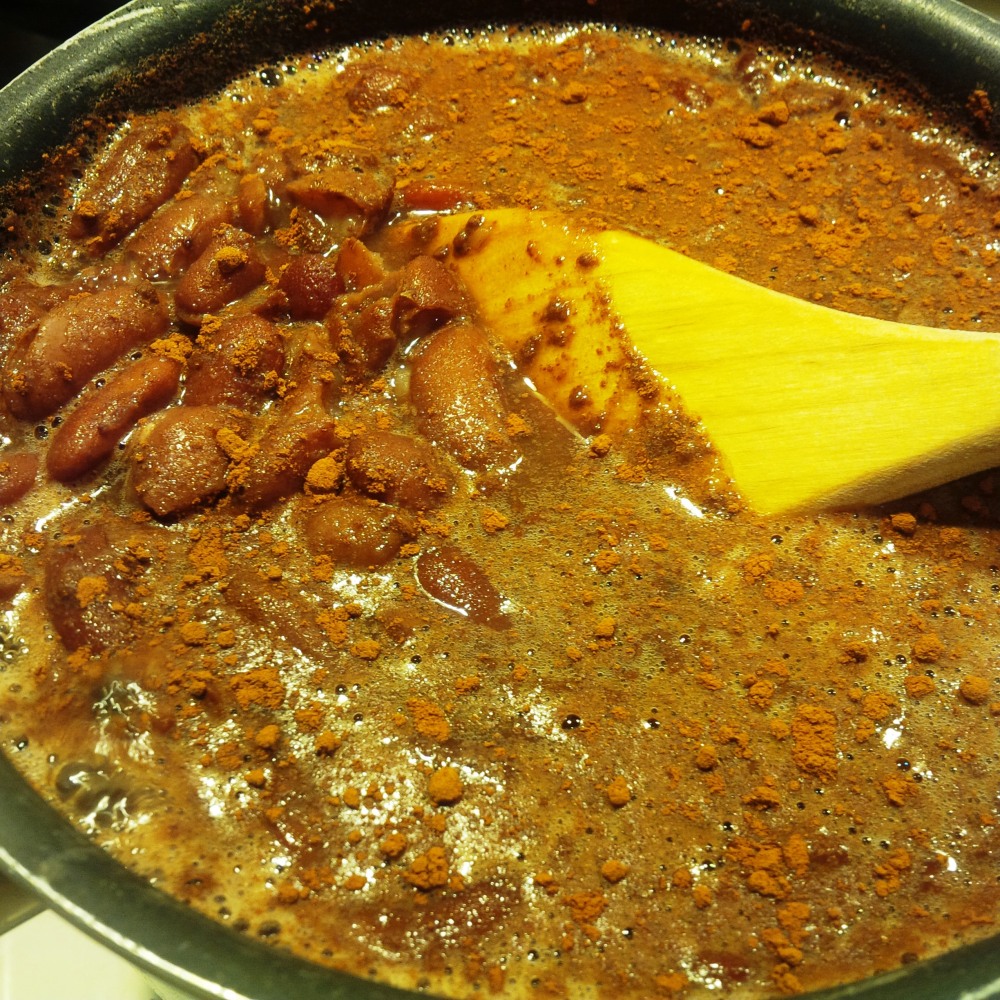
Stir it and bring to boil again. Reduce heat and simmer until most of the liquid evaporates. You’ll need to stir it occasionally and taste it for sweetness.
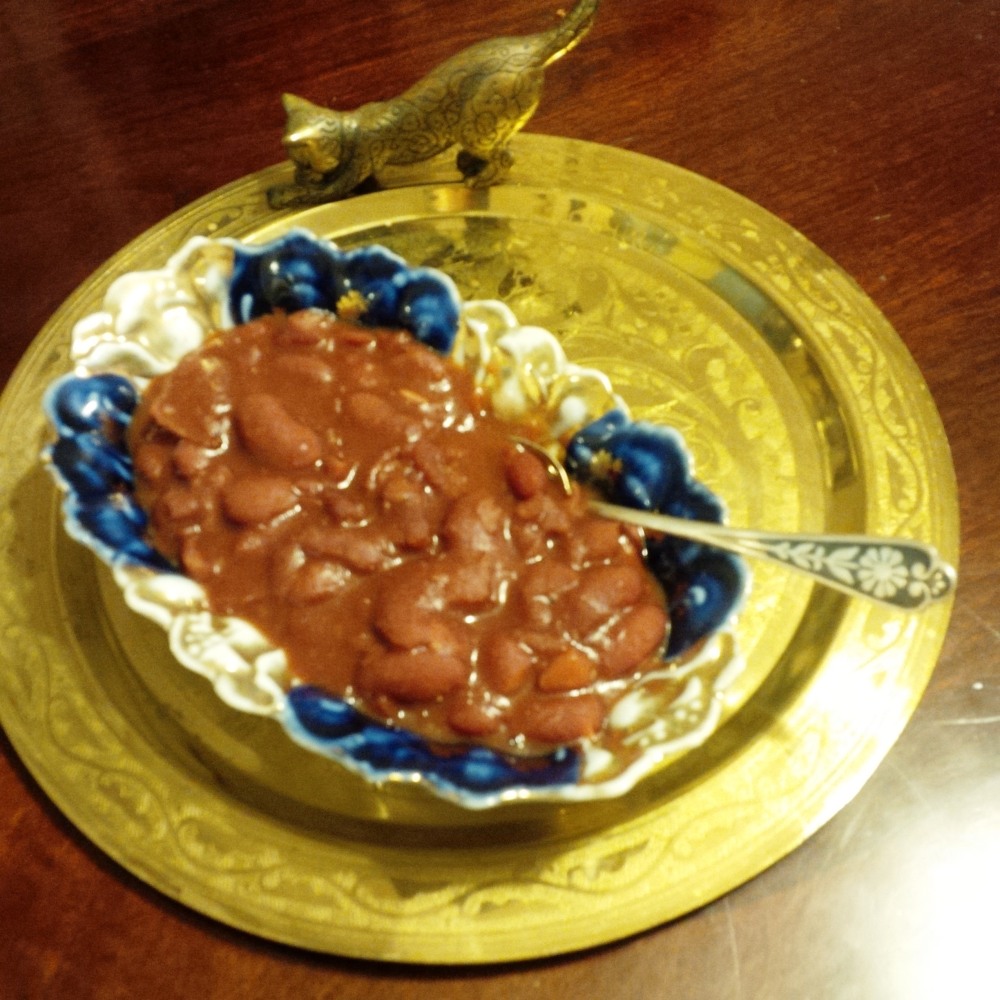
Keep it refrigerated and serve it cold. In my family it has always been everybody’s favorite not only on the holiday table, but also as a snack or even dessert. May our merits increase, and may all our loved ones and dear friends have a happy, healthy, and sweet year! Shana Tova! A Zis Yor!
INGREDIENTS
- 2 cups cooked red kidney beans (1 cup dry)
- 1/2 cup honey or more to taste
- 1 teaspoon cinnamon
PROCEDURE
- Soak beans for at least 2 hours, preferably overnight. Discard soaking water, cook in crock pot or stove top until very soft. Stir as needed.
- Transfer to stove top pot, add water to cover, bring to boil.
- Add honey and cinnamon, stir, bring to boil, reduce to simmering. Simmer until most of the liquid evaporates, stirring occasionally. Adjust sweetness to taste.
Like almost everything that has to do with Jewish traditions, there are two interpretations of the Carrot Tzimmes, baked or stewed sliced carrots with honey, dried fruit or raisins, and whatever spices your prefer. The Yiddish word for carrot is mehren, which is very close to the Yiddish word for more – mehr. The argument seems to focus on this word: more of what? The older tradition, going back to medieval Germany, simply replaced fenugreek, a vegetable unheard of in Europe, with carrots, pronouncing the same blessing: “May our merits increase.” In other words, we are requesting more opportunities to do more good deeds, so that our merits should increase. Doing good deeds is what will make the year sweet.

The other, more modern opinion, is that sliced carrots resemble gold coins, so by serving them on Rosh Hashana, we ask to increase our prosperity. Simply put, having more money will sweeten the year. I don’t see anything wrong with prosperity as a concept, but I seriously believe that it’s not worth a special holiday request, and it’s His business anyway, so the request is, in effect, invalid. In any event, I’d rather stick to traditional blessings; they worked for our grandparents – they should work for us as well.

There are as many different recipes for Mehren Tzimmes, as there are Jewish grandmothers remembered in numerous kitchens around the world. Mine is bare-bones basic. Carrots are sliced – they do look like coins – covered with water and cooked for about 20 minutes, until they become soft and most of the water evaporates.
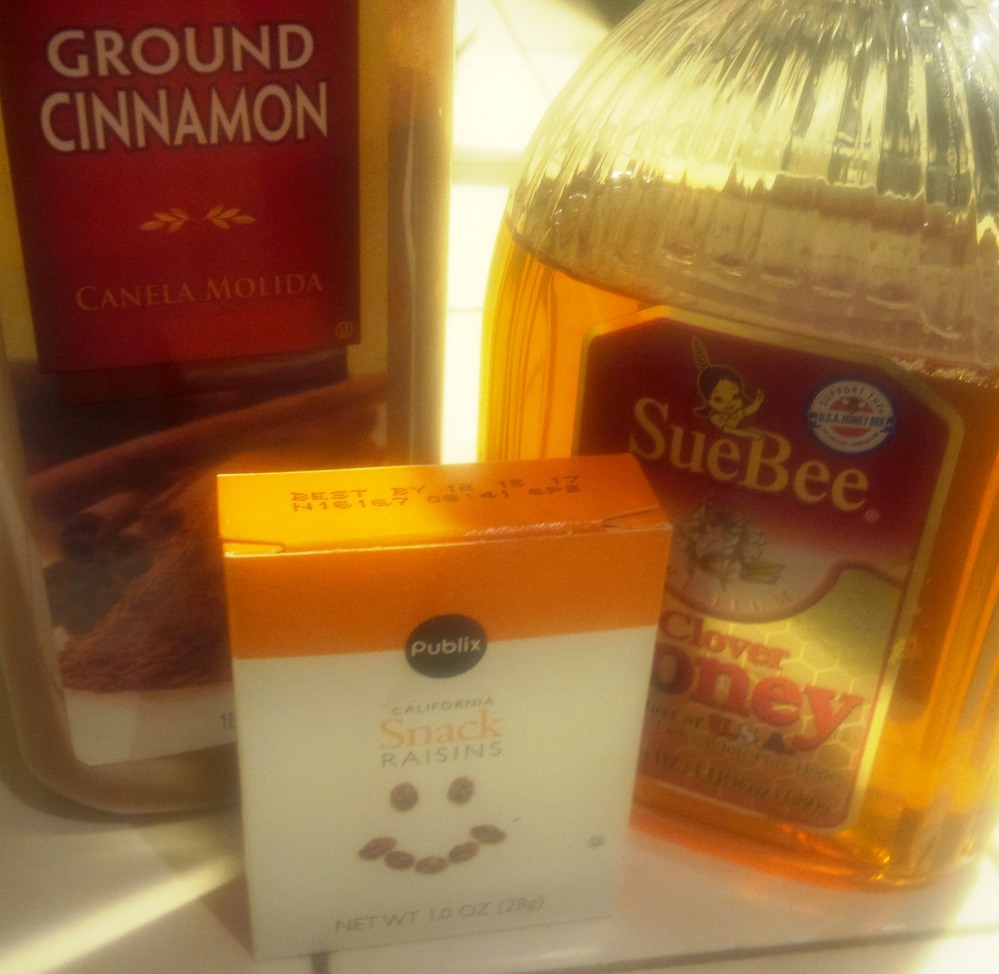
I add honey, raisins and cinnamon, but you can add any dry fruit you like, as well as any spices you prefer. I’ve seen tzimmes with nutmeg, cardamon, and even hot pepper. I draw the line at marshmallows, though, but if that’s what it takes to make it more attractive to the kids, go ahead! 
Let it simmer for about 10 – 15 minutes, until honey is mostly absorbed and raisins plump up. Give it a stir once in a while so it doesn’t stick.
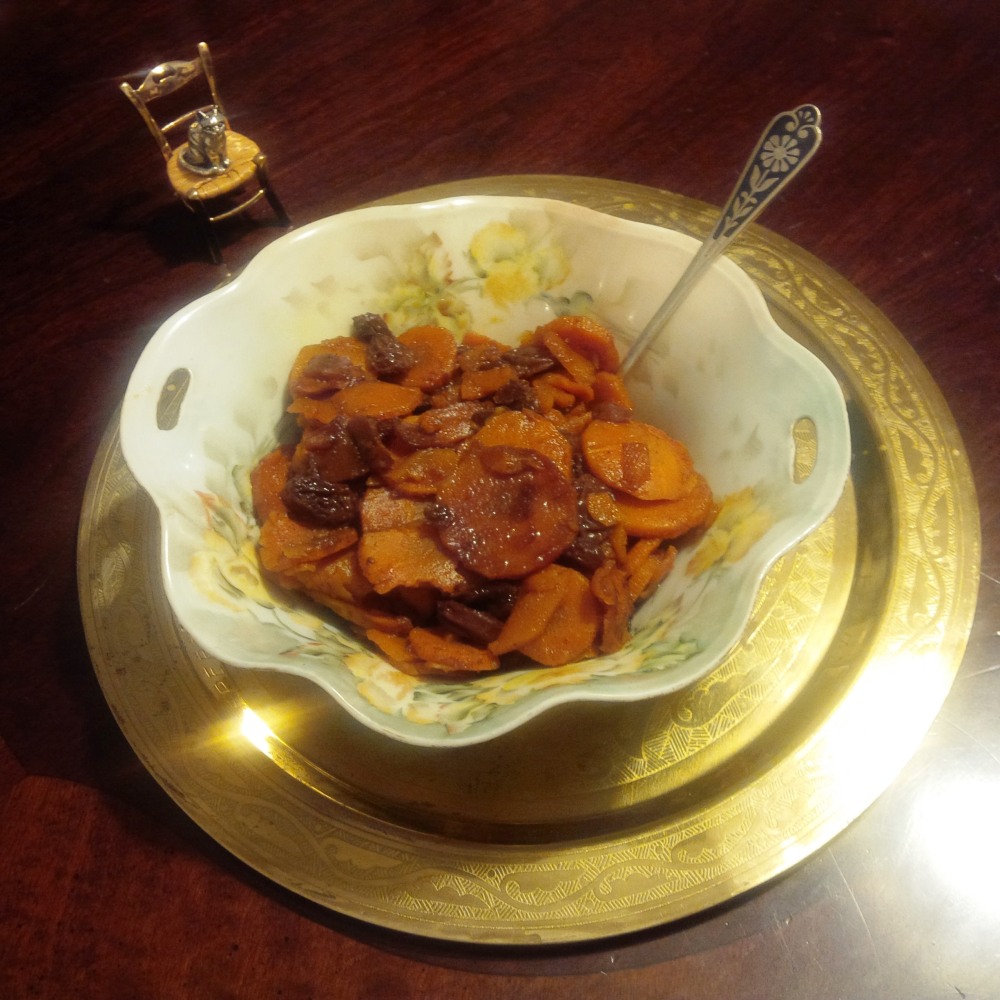
We like carrots on the dry side, almost candied, so I let more honey be absorbed, but it could be made more gooey, if you wish. Serve it cold, and remember the blessings: let our good deeds increase and sweeten the year! Shana Tova u’Metuka! A Zis Yor!
The dissemination of all my holiday recipes to a wider audience has been made possible through a valiant effort of Esme, The Recipe Hunter, of https://cookandenjoyrecipes.wordpress.com, and her fantastic Recipe Exchange program. Thank you again, dear Esme, for performing this vitally important service for the community.
INGREDIENTS
- 3 – 4 large carrots, peeled and sliced
- 1/4 cup honey
- 1/4 cup (1 oz) raisins
- 1/2 teaspoon cinnamon
PROCEDURE
- Cover carrots with water, bring to boil, simmer for 20 – 25 minutes until soft. Let most of the liquid evaporate.
- Add the rest of ingredients, stir, bring to boil, simmer for 10 – 15 minutes, stirring occasionally.
- Serve cold.
Enjoy!

Still fascinating and tasty
LikeLiked by 1 person
Thank you so much, Derrick.
LikeLiked by 1 person
Love the stories and the history, and the recipe of course! Beans are such a staple in so many traditions.
LikeLiked by 1 person
Thank you so much, dear Dorothy!
LikeLiked by 1 person
Reblogged this on Ed;s Site..
LikeLiked by 1 person
Thank you so much for reblogging, Edward.
LikeLiked by 1 person
Do you store in bottles for subsequent munchings?😊
LikeLiked by 1 person
Sure do, dear Serena – in jars.
LikeLiked by 1 person
This is such an interesting post. It is so interesting how so many different cultures celebrate the New Year with a dish of beans.
LikeLiked by 1 person
Yes, isn’t that incredible? We people have much more in common than we realize.
Thank you so much, dear Bernadette.
LikeLike
Hot pepper with the sweet?? Cinnamon sounds good tho! My Mama makes carrot coins with honey too. But it’s almost like candy! The better to eat it!
LikeLiked by 1 person
Not the real hot pepper – just a dash of black pepper, to intensify the sweetness. It is like candy, and all, kids love it.
How are you doing, my favorite purple person?
LikeLiked by 1 person
Oh, ok. Whew! Doing ok, thx. TY for keeping me in your prayers! ❤
LikeLiked by 1 person
Sending you much love and many blessings, my favorite purple person!
LikeLiked by 1 person
<3, and it is returned, twofold!!
LikeLike
That’s very wise, that the blessings that worked for our ancestors will work for us.
LikeLiked by 1 person
Ah, dear Mimi, I believe that blessings do not have expiration dates; they are eternal and always work.
Thank you for stopping by!
LikeLike
Lulu: “Appetizers! Dada loves appetizers! He says he could just fill up on them.”
Charlee: “Doesn’t that technically make them a meal?”
(pause)
Lulu: “Mind. Blown.”
LikeLiked by 1 person
You Dada is smart. Charlee, don’t be such a killjoy!
The Cat Gang.
LikeLike
I absolutely love kidney beans and carrots but have never eaten or cooked them like this…something new to try 🙂 x
LikeLiked by 1 person
If you are not afraid of overloading on sugar, that is – LOL. We smother everything in honey, for a sweet year.
LikeLiked by 2 people
Well they do say a little of what you fancy does you good…lol x
LikeLiked by 2 people
Sure does! 😻
LikeLiked by 1 person
Coupling your recipes with stories and background is such a treat!
LikeLiked by 2 people
Thank you so much for a kind comment, dear Linda!
LikeLiked by 2 people
Reblogged this on OPENED HERE >> https:/BOOKS.ESLARN-NET.DE.
LikeLiked by 1 person
Thank you so much for reblogging, dear friend.
LikeLike
The last time i had cooked beans i had forgotten to soak them over night. My stomach was very happy with them. 😉 xx Michael
LikeLiked by 1 person
I can imagine, Michael! I not only soak them, but sprout them, for easier digestion and better nutritional value.
LikeLike